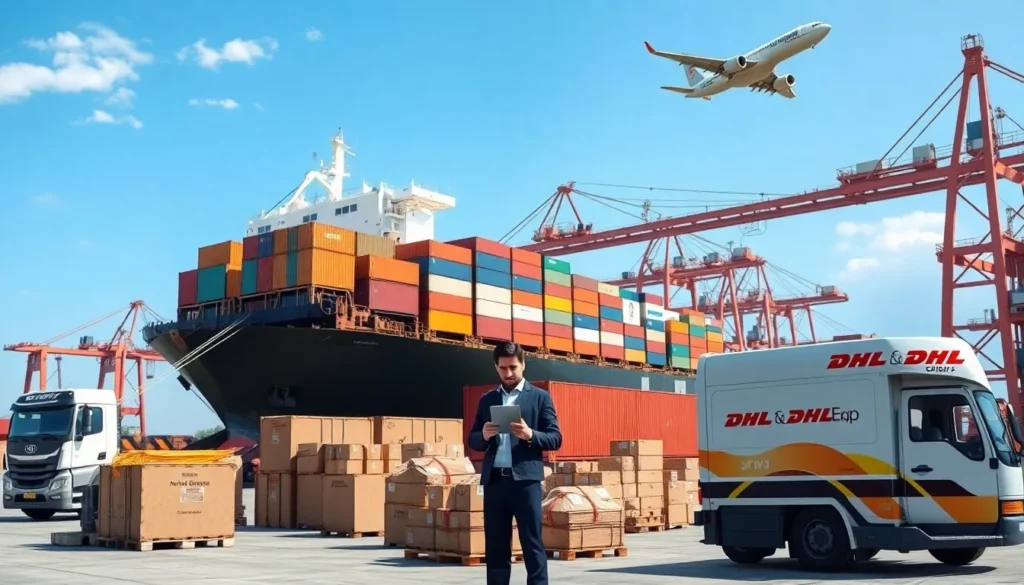Importing goods from China to Mexico involves managing intricate logistics, customs processes, and cost structures that directly affect your supply chain’s efficiency. This guide provides clear, actionable strategies to streamline your shipping operations, helping you cut transit times, reduce total landed costs, and ensure smooth customs clearance. You’ll find detailed insights into shipping methods, cost breakdowns, regulatory requirements, and partnerships to optimize your China-Mexico trade.
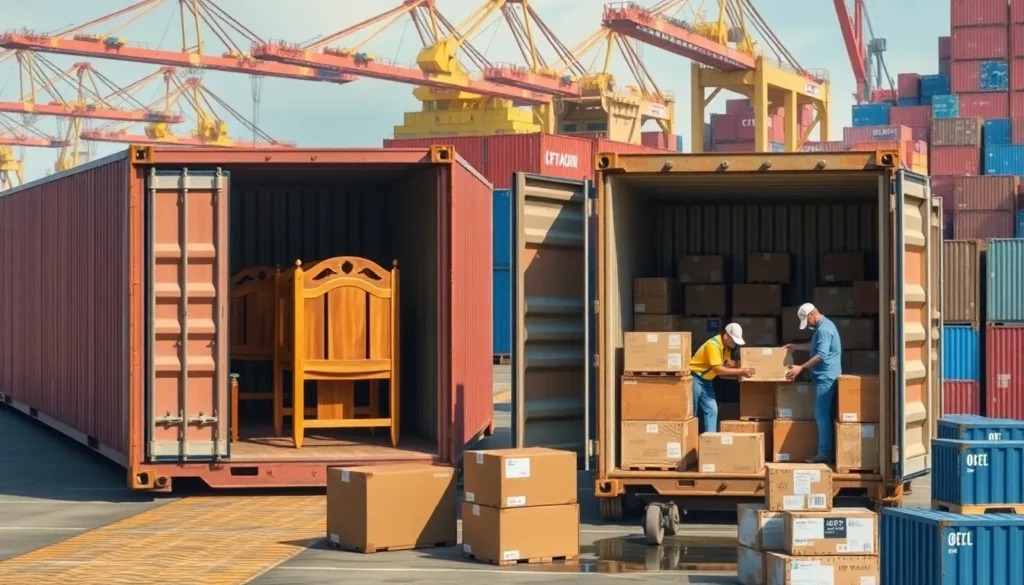
Comparing Air, Sea, and Express Freight Options
Sea Freight: Your Go-To for High-Volume Shipments
FCL (Full Container Load): Best for Large Retailers and Manufacturers
With FCL, you get exclusive use of a 20-foot or 40-foot container, ideal for businesses shipping large volumes regularly. This method ensures your goods travel securely without sharing space, reducing risks of damage or delays.
- Cost Snapshot:
| Destination Port | 20-foot Container (USD) | 40-foot Container (USD) |
|---|---|---|
| Manzanillo | $2,650 | $3,650 |
| Lázaro Cárdenas | $2,600 | $3,600 |
- Why Choose FCL: Faster customs clearance due to single-shipper inspections and better security for fragile or specialized cargo like machinery or bulk materials.
Real-World Example: A Mexican furniture retailer uses FCL to ship full production runs of dining sets, ensuring consistent quality and avoiding cross-contamination with other shipments.
Tips: Book FCL for shipments exceeding 20 cubic meters to maximize cost efficiency and minimize handling risks.
LCL (Less than Container Load): Perfect for Smaller Businesses
LCL consolidates your cargo with other importers’ goods in a shared container, making it cost-effective for smaller shipments. This is a great fit for SMEs, e-commerce sellers, or startups with lower volumes.
- Cost Snapshot:
| Origin | Destination | LCL Rate (USD/CBM) |
|---|---|---|
| Shenzhen | Manzanillo | $150 |
| Shenzhen | Mexico City | $200 |
| Shenzhen | Guadalajara | $200 |
| Shenzhen | (General Range) | $150–$200 |
- Trade-Offs: Expect 5-10 extra days for transit due to consolidation and deconsolidation processes.
Real-World Example: An Amazon seller ships 5 cubic meters of electronics accessories via LCL to restock inventory, saving on upfront costs while maintaining regular shipments.
Important Warnings: LCL involves additional handling, increasing the risk of damage. Ensure robust packaging to protect your goods.
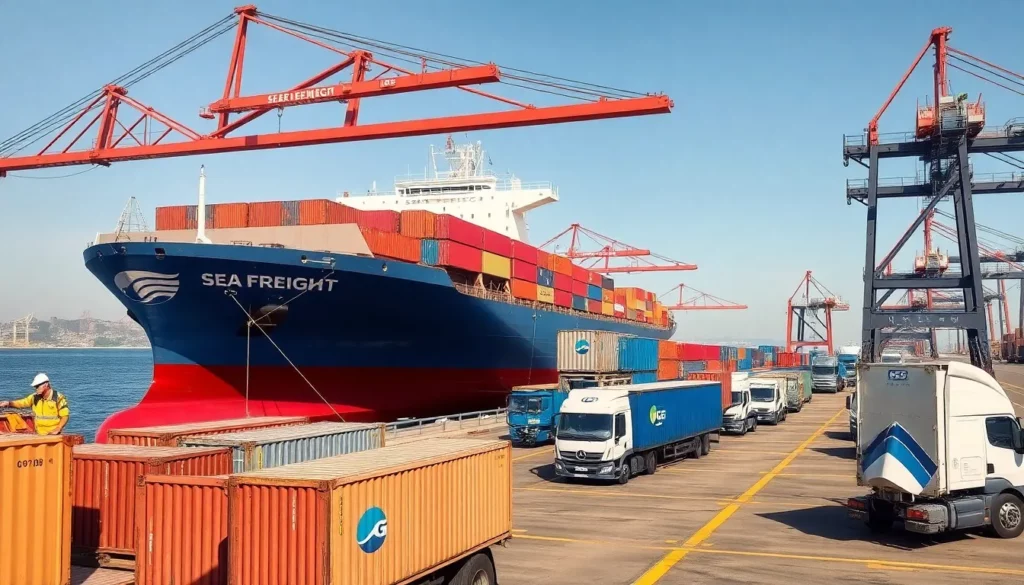
Sea Freight Costs: What to Budget For
Your total sea freight costs go beyond base rates. Additional fees can significantly impact your budget, so plan accordingly.
| Cost Component | Description | Typical Range |
|---|---|---|
| Base Freight Rate | Core ocean transport cost | $2,600-$3,650 per container |
| Bunker Adjustment Factor (BAF) | Fuel surcharge based on oil prices | 10-15% of base rate |
| Terminal Handling Charges (THC) | Port handling fees at origin and destination | $150-$300 per container |
| Drayage Fees | Inland trucking from port to destination | $200-$800 per shipment |
| Miscellaneous Fees | Documentation, customs, and security charges | 5-10% of base rate |
Best Practices: Request itemized quotes to avoid surprises and budget an extra 10-15% for fluctuating surcharges.
Sea Freight Transit Times: Plan Your Schedule
Transit times vary based on the route and service level. Port-to-port shipping from China to Mexico’s Pacific coast takes 20-35 days, while door-to-door delivery extends to 30-50 days.
- Key Routes: Shanghai to Manzanillo takes ~30 days; Shenzhen to Veracruz takes ~46 days.
- New Developments: Direct routes by COSCO Shipping cut transit to 22 days for Ensenada, Manzanillo, and Lázaro Cárdenas.
- Peak Season Impact: Chinese New Year or pre-holiday rushes can add 5-15 days due to congestion.
Tips: Book 4-6 weeks in advance during peak seasons to secure space and avoid delays.
Essential Sea Freight Documents
Accurate documentation is critical for smooth customs clearance. Missing or incorrect paperwork can lead to costly delays.
- Bill of Lading (B/L): Your cargo receipt and ownership proof, required for release at destination.
- Commercial Invoice: Details product descriptions, values, and trade terms for duty calculations.
- Packing List: Lists cargo contents, weights, and container details for customs inspections.
- Certificate of Origin: May reduce duties under trade agreements if properly completed.
Important Warnings: Inaccurate invoices or missing certificates can trigger fines or cargo holds. Work with a customs broker to ensure compliance.
Ideal Goods for Sea Freight
Sea freight suits non-urgent, high-volume, or heavy cargo where cost savings outweigh transit time.
- Best Cargo Types: Bulk goods, raw materials, machinery, textiles, or industrial components.
- Specialized Needs: Reefer containers for temperature-sensitive items or flat-rack containers for oversized cargo like vehicles.
Real-World Example: A construction firm ships steel beams via sea freight, using flat-rack containers to accommodate oversized loads economically.
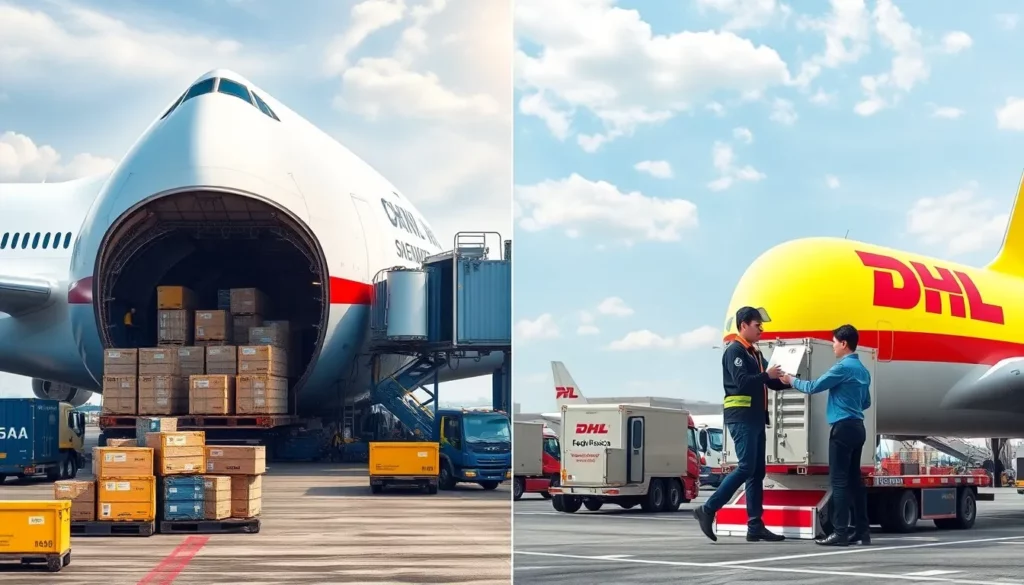
Air Freight: Speed for Time-Sensitive Shipments
Standard Air Cargo: Balancing Speed and Cost
Standard air cargo offers reliable 5-8 day delivery from Chinese airports to Mexico’s major hubs, ideal for time-sensitive goods without express premiums.
- Cost Snapshot:
| Origin | Weight Bracket | Rate (USD/kg) |
|---|---|---|
| Shanghai | >100 kg | $7.83 |
| Shenzhen | >100 kg | $7.13 |
- Weight Calculation: Chargeable weight uses the greater of actual or volumetric weight (L x W x H ÷ 6000).
- Logistics Note: Requires separate inland transport arrangements, adding time and cost.
Tips: Use standard air for shipments between 100-500kg to balance cost and speed.
Express Air Cargo: Fastest Option for Urgent Needs
Express air cargo delivers in 3-5 days with door-to-door service, perfect for high-priority components or small parcels.
- Cost Snapshot: Rates start at $25/kg for small parcels, with volume discounts for larger shipments.
- Benefits: Includes pickup, customs clearance, and real-time tracking via DHL, FedEx, or UPS.
Real-World Example: A medical device manufacturer uses express air to ship critical components, ensuring production lines stay operational.
Best Practices: Reserve express air for high-value or time-critical goods to justify the premium cost.
Air Freight Costs: Key Components
Air freight rates depend on weight, volume, and surcharges. Understanding these helps you budget accurately.
| Cost Component | Description | Typical Range |
|---|---|---|
| Base Rate | Core air transport cost | $7.13-$7.83/kg (100kg+) |
| Fuel Surcharge | Aviation fuel cost adjustment | 15-25% of base rate |
| Security/Handling Fees | Airport and customs processing | $50-$200 per shipment |
| Special Handling | Dangerous goods or oversized cargo | 10-20% of base rate |
Important Warnings: Bulky, lightweight cargo can inflate costs due to volumetric weight. Measure accurately to avoid surprises.
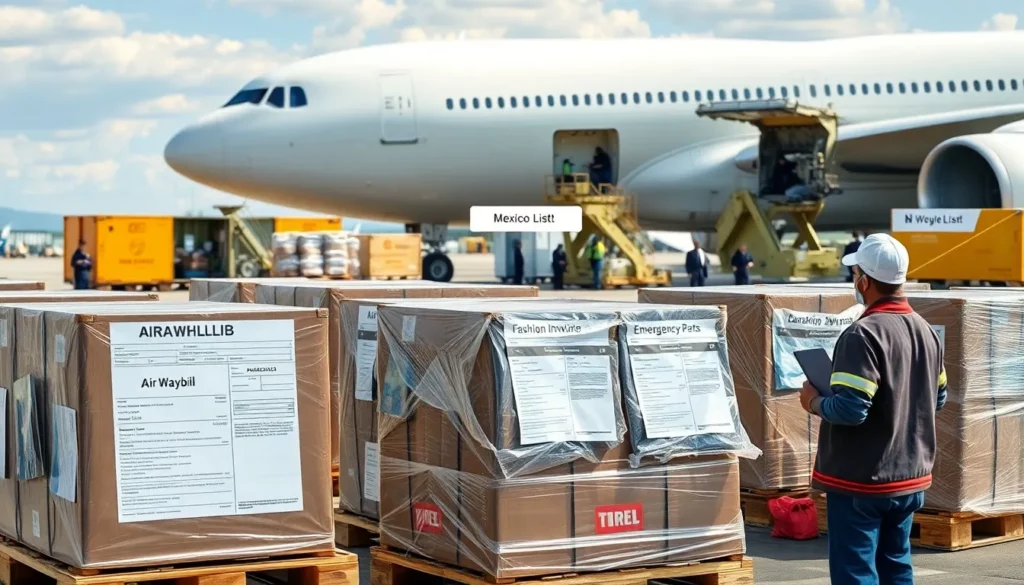
Air Freight Transit Times
Airport-to-airport transit takes 3-7 days, while door-to-door extends to 5-12 days, depending on customs efficiency.
- Key Routes: Direct flights to Mexico City or Guadalajara are fastest; connections add 1-2 days.
- Customs Impact: Proper documentation can cut clearance from days to hours.
- Scheduling Note: Weekend or holiday flights are limited, so plan for business-day schedules.
Tips: Pre-clear customs documents to minimize delays, especially for express shipments.
Essential Air Freight Documents
Air freight requires precise documentation to meet aviation and customs standards.
- Air Waybill (AWB): Non-negotiable contract and receipt for cargo release.
- Commercial Invoice: Detailed product info for duty calculations.
- Packing List: Specifies contents and packaging for security screening.
- Dangerous Goods Declaration: Required for restricted items like lithium batteries.
Important Warnings: Incomplete dangerous goods declarations can halt shipments. Consult your forwarder for compliance.
Ideal Goods for Air Freight
Air freight is best for high-value, time-sensitive, or perishable goods where speed outweighs cost.
- Best Cargo Types: Electronics, medical devices, fashion apparel, or emergency parts.
Real-World Example: A retailer air-ships seasonal clothing to meet market trends, ensuring shelves stay stocked.
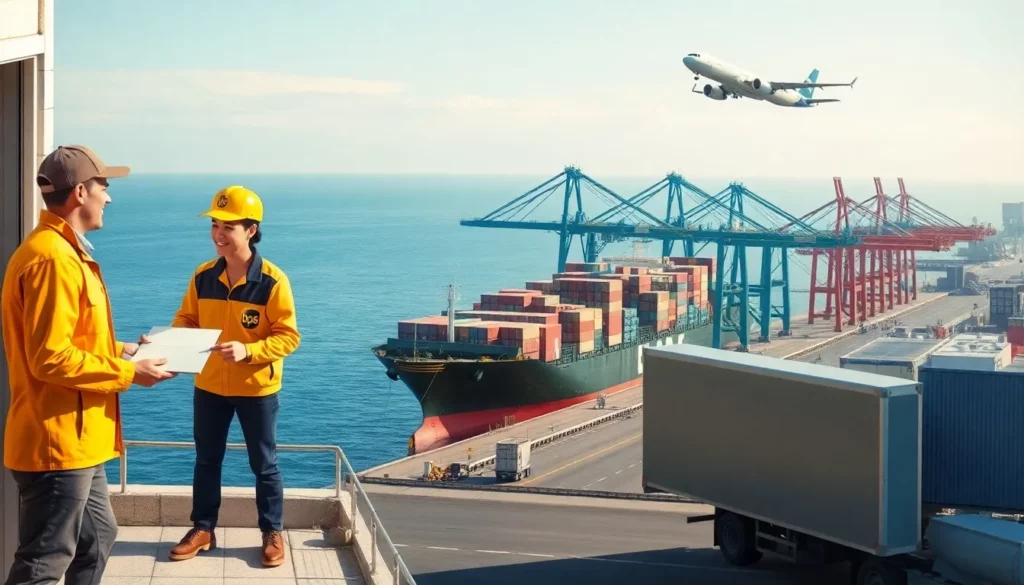
Express Courier and Multimodal Solutions
Express Courier: Simplified Small-Parcel Shipping
Express couriers like DHL, FedEx, and UPS offer 3-5 day door-to-door delivery, handling all logistics and customs.
- Cost Snapshot: Rates range from $17.70-$16.36/kg for 1-5kg parcels, dropping to $8.82-$14.73/kg for 6-11kg.
- Benefits: Integrated customs clearance and real-time tracking for peace of mind.
Real-World Example: A startup ships product samples to Mexican clients via express courier, ensuring fast market testing.
Tips: Use express for parcels under 11kg or urgent deliveries to maximize value.
Multimodal Options: Balancing Cost and Speed
Multimodal solutions combine sea and air or truck transport, offering a cost-effective middle ground.
- Sea-Air Route: Ocean to US West Coast (12-16 days), then air to Mexico (2-3 days), totaling 15-25 days.
- Cost Savings: 30-40% cheaper than direct air freight, with faster delivery than sea.
Real-World Example: An electronics importer uses sea-air to ship components, balancing cost and delivery deadlines.
Best Practices: Choose multimodal for shipments needing faster delivery than sea but lower costs than air.
Multimodal Costs
Multimodal rates blend sea, air, and ground transport costs, with additional handling fees.
| Cost Component | Description | Typical Range |
|---|---|---|
| Blended Rate | Combined sea and air transport | 30-40% less than air freight |
| Transshipment Fees | US handling and customs bonds | 10-15% of total cost |
| Handling Fees | Consolidation/deconsolidation | Similar to LCL fees |
| Insurance | Coverage for multiple modes | Varies by cargo value |
Tips: Ensure insurance covers all transport segments to avoid gaps.
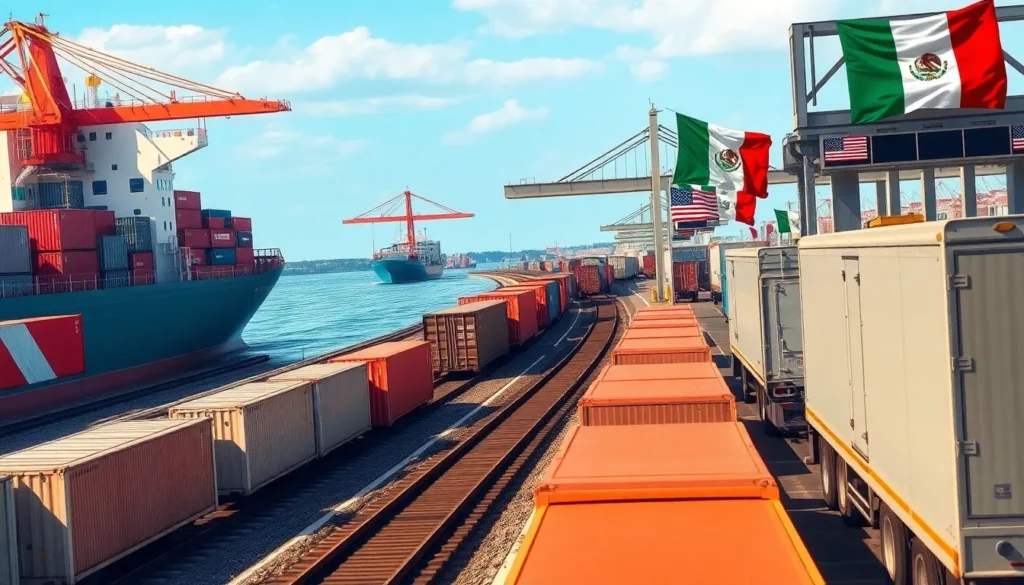
Multimodal Transit Times
Total transit times range from 15-25 days, with customs adding 2-5 days at US and Mexican borders.
- Key Factors: US transshipment and customs efficiency impact timing.
- Peak Season Note: Congestion during Chinese New Year or holidays can delay multimodal routes.
Important Warnings: Coordinate documentation for both US and Mexican customs to avoid delays.
Essential Multimodal Documents
Multimodal shipments require integrated paperwork for seamless transitions.
- Through Bill of Lading: Covers the entire journey under one contract.
- Commercial Invoice/Packing List: Must comply with US and Mexican regulations.
- Customs Transit Bonds: Enable duty-free US transit for Mexico-bound cargo.
Tips: Use a forwarder experienced in multimodal to simplify documentation.
Ideal Scenarios for Multimodal
Multimodal suits businesses balancing cost and speed for non-urgent but time-sensitive cargo.
- Best Use Cases: Seasonal merchandise, critical components, or inventory restocking.
Real-World Example: A retailer uses sea-air to ship holiday goods, meeting market timing without air freight costs.
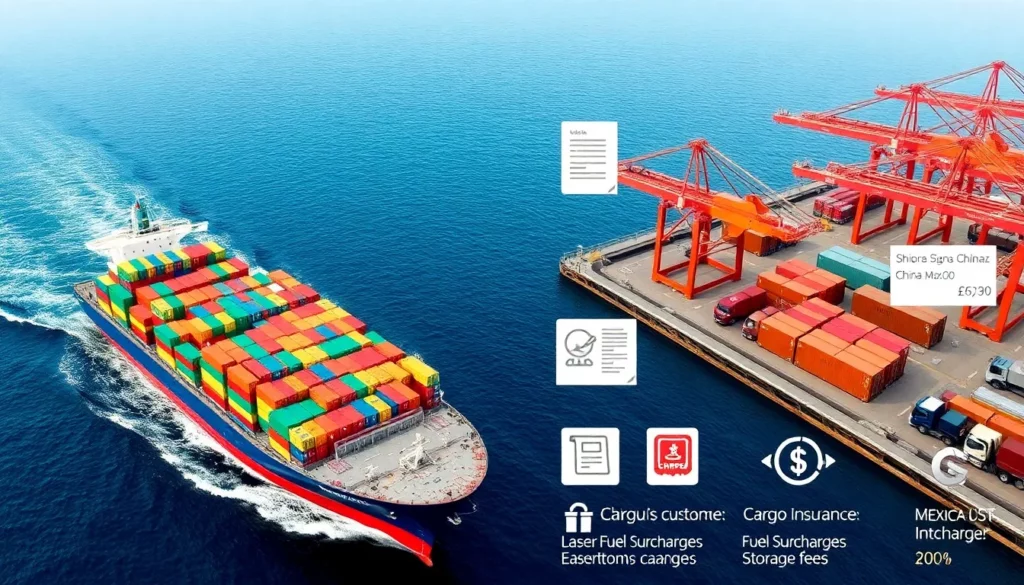
China-to-Mexico Shipping Costs and Duties
Freight Cost Components
Base Rates and Surcharges
Base freight rates are just the starting point, typically covering 60-70% of your total costs. Additional surcharges adjust for market conditions and fuel prices.
- General Rate Increases (GRI): Applied quarterly, increasing rates by 5-15%.
- Peak Season Surcharges (PSS): Add $200-$500 per container during high-demand periods.
- BAF/CAF: Fuel and currency adjustments, adding 10-20% monthly.
Best Practices: Monitor GRI and PSS announcements to budget for seasonal spikes.
Origin and Destination Charges
Port and handling fees at both ends add to your costs, varying by location and service.
| Charge Type | Description | Typical Range |
|---|---|---|
| THC | Port handling in China and Mexico | $80-$350 per container |
| Export Fees | Customs declarations in China | $50-$100 per shipment |
| Port Security | Inspection and documentation fees | $100-$300 per shipment |
| Storage Fees | For exceeding free time at terminals | $25-$75 per day |
Important Warnings: Exceeding free time at ports can rack up demurrage or storage fees. Clear cargo promptly.
Freight Forwarder Fees
Forwarders charge for coordination and customs services, adding to your budget.
- Documentation/Customs: $150-$400 per shipment for paperwork and clearance.
- Cargo Management: 5-10% of base freight for booking and tracking.
- Inland Transport: $100-$300 for supplier-to-port logistics.
Tips: Choose forwarders with transparent fee structures to avoid hidden costs.
Cargo Insurance
Insurance protects against loss, damage, or theft, with premiums based on cargo value.
- Premium Rates: 0.4% of CIF value for all-risk coverage on Mexican routes.
- Deductibles: $500-$2,500 per claim, balancing cost and coverage.
- Extensions: Add 10-25% for inland transit or customs delay coverage.
Best Practices: Opt for all-risk coverage for high-value goods to minimize financial exposure.
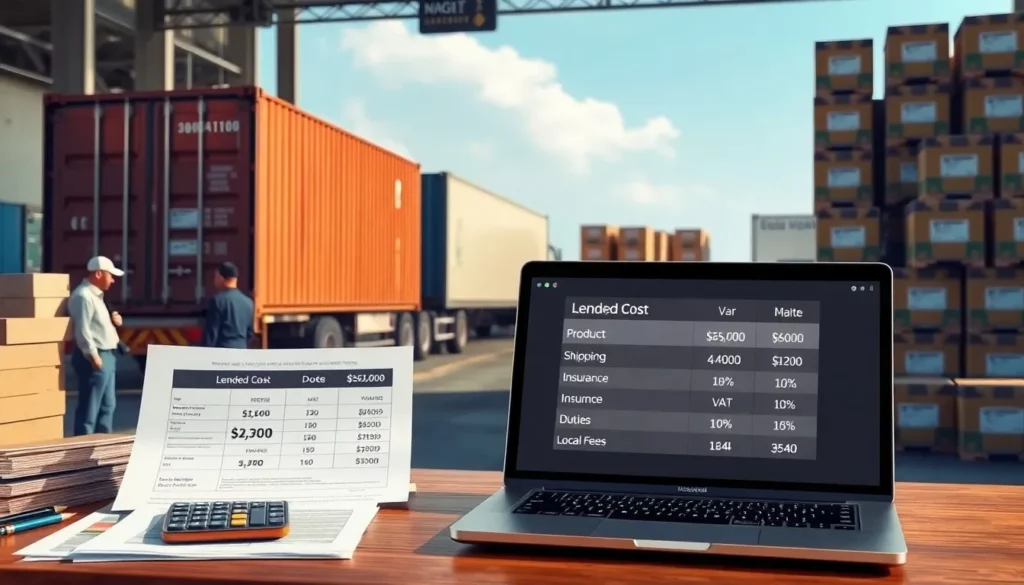
Mexico’s Customs Duties and Regulations
Calculating Landed Cost
Your total landed cost includes all expenses from supplier to final delivery, critical for pricing decisions.
- Formula: (Product Cost + Shipping + Insurance) + Import Duties + VAT + Local Fees
Example: A $50,000 shipment with $4,200 freight, $200 insurance, 10% duty, and 16% VAT totals ~$62,400 landed cost.
Tips: Use landed cost calculations to set competitive retail prices and maintain margins.
Customs Valuation
Mexico’s SAT bases duties on the CIF value, including all costs to the Mexican border.
- Transaction Value: Product cost plus transport, insurance, and related fees.
- Alternative Methods: Used if transaction value is unclear, based on comparable goods or deductive value.
Real-World Example: A toy importer faced valuation disputes due to incomplete invoices, delaying clearance by a week.
Important Warnings: Inaccurate valuations can lead to fines or cargo holds. Provide detailed invoices to avoid disputes.
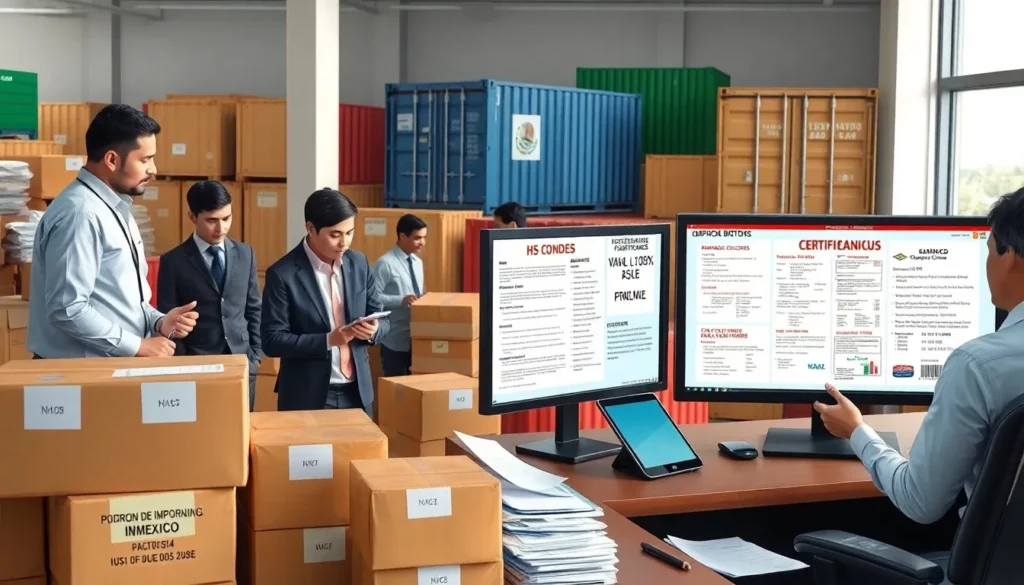
Import Duties
Mexico’s TIGIE tariff schedule sets duty rates by HS code, averaging 13.97% but ranging from 0-140.4%.
- Recent Changes: Tariffs added 5-50% duties on 544 HS codes, including steel and apparel.
- Anti-Dumping Duties: 25-35% extra for Chinese tires and polyester resin.
- Trade Agreements: Certificates of Origin can lower or eliminate duties.
Best Practices: Verify HS codes with a customs broker to secure trade agreement benefits.
Value Added Tax (VAT/IVA)
Mexico applies a 16% VAT on CIF value plus duties, with an 8% rate in border regions.
- Recovery: Registered Mexican businesses can recover VAT through tax returns.
- Exemptions: Apply to zero-rated exports, foodstuffs, and medicines.
Tips: Factor VAT into pricing, as non-registered importers cannot recover it.
Importer Registration
You must register in Mexico’s Padrón de Importadores to import legally.
- Requirements: Valid RFC, SIEC passcode, and a licensed customs broker.
- Sector-Specific: Additional registries for pharmaceuticals or chemicals.
- Maintenance: Annual updates to avoid clearance issues.
Important Warnings: Inactive registration halts imports. Keep your status active.
NOM Certification
Certain products require NOM certification for safety and compliance.
- Covered Products: Electronics, appliances, and telecommunications devices.
- Costs: $2,000-$10,000 per product line for testing and certification.
Real-World Example: An importer’s non-certified lamps were seized, costing $5,000 in recovery fees.
Important Warnings: Non-compliant goods face import bans. Verify NOM requirements before shipping.
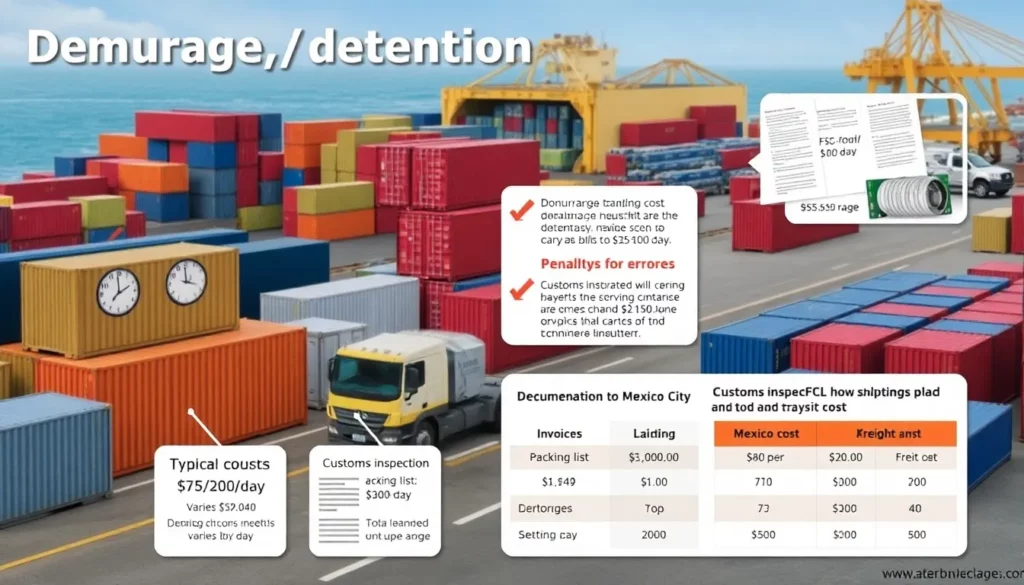
Avoiding Unexpected Costs and Penalties
Demurrage, Detention, and Storage
These charges arise from delays in cargo handling or equipment return.
| Charge Type | Description | Typical Cost |
|---|---|---|
| Demurrage | Container at port beyond free time | $75-$200/day |
| Detention | Holding carrier equipment | Varies by carrier |
| Storage | Cargo in customs warehouses | $25-$100/day |
Best Practices: Schedule prompt pickup to avoid escalating fees.
Documentation Penalties
Errors in paperwork can lead to significant fines.
- Invoice Errors: $1,000-$25,000 per violation for inaccurate descriptions or values.
- Packing List Issues: Discrepancies trigger inspections or seizures.
- B/L Amendments: $150-$500 per correction post-departure.
Important Warnings: Double-check documents to avoid costly penalties or delays.
Customs Inspection Fees
Inspections add costs, especially for physical examinations.
- Physical Exams: $400-$800 per container, plus overtime fees.
- X-Ray Scans: $200-$400 per container for non-intrusive checks.
- Re-Inspections: Double or triple initial costs for discrepancies.
Tips: Ensure accurate documentation to minimize inspection risks.
Case Study: FCL vs. LCL to Mexico City
Comparing FCL and LCL for a $50,000 shipment to Mexico City highlights cost and time trade-offs.
| Metric | FCL (40-ft) | LCL (10 CBM) |
|---|---|---|
| Freight Cost | $4,200 | $2,000 |
| Total Landed Cost | $62,700 | $58,200 |
| Transit Time | 32 days | 38 days |
| Best For | >20 CBM | <20 CBM |
Key Takeaways: FCL is cost-efficient for larger volumes; LCL suits smaller shipments but risks longer transit and handling damage.
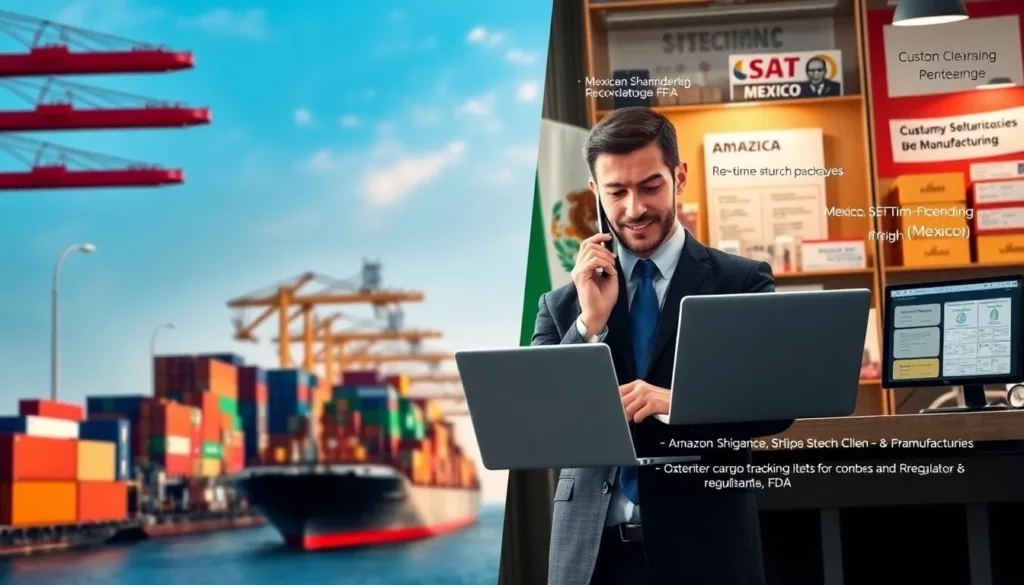
Choosing a Reliable China-Mexico Freight Forwarder
Evaluating Forwarder Capabilities
Experience on the China-Mexico Route
A forwarder’s track record is critical for reliable service.
- What to Check: Case studies, shipment volumes (1,000+ annually), and client testimonials.
- Why It Matters: Specialized knowledge of seasonal patterns and regulations ensures smooth operations.
Real-World Example: A forwarder’s expertise in Manzanillo customs saved an importer from a $10,000 penalty due to misclassified goods.
Tips: Request references from similar industries to confirm expertise.
In-House Customs Brokerage
Forwarders with licensed Mexican brokers streamline clearance.
- Benefits: Seamless coordination and faster problem resolution.
- Verification: Check SAT licensing and customs relationships.
- Technology: Integrated platforms provide real-time clearance updates.
Best Practices: Prioritize forwarders with in-house brokerage for accountability.
Industry-Specific Expertise
Forwarders specializing in your sector understand unique needs.
- E-Commerce: Amazon FBA prep and labeling services.
- Manufacturing: Oversized cargo handling and complex order management.
- Regulatory: Expertise in NOM, FDA, or hazardous goods compliance.
Tips: Choose forwarders with proven experience in your product category.
Global and Local Infrastructure
A strong network ensures end-to-end service.
- China Presence: Offices in Shenzhen, Shanghai, and Ningbo for pickup coordination.
- Mexico Coverage: Operations in Mexico City, Guadalajara, and Monterrey.
- Agent Networks: Trusted partners for consistent service quality.
Best Practices: Select forwarders with local infrastructure for efficiency.
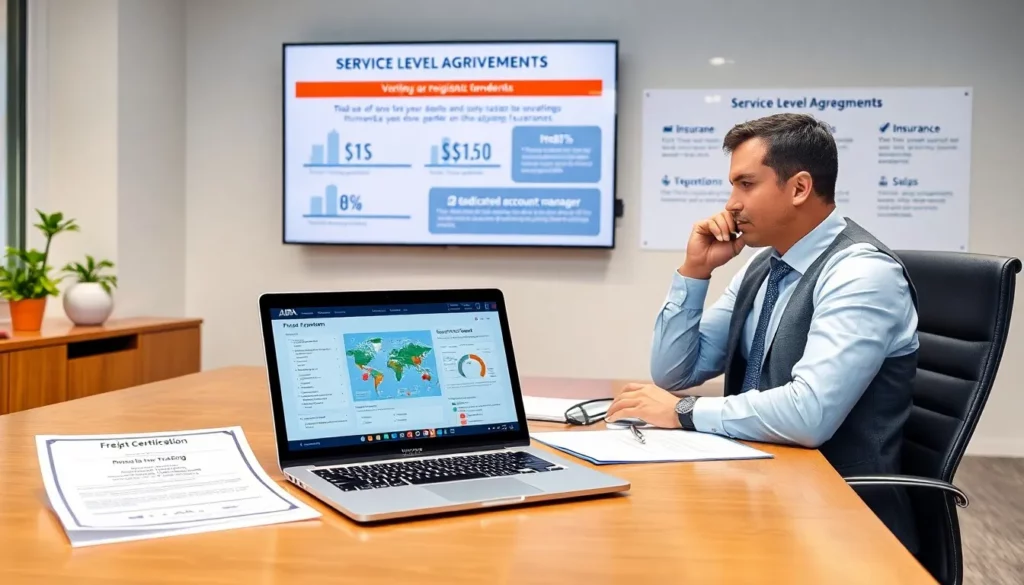
Conducting Due Diligence
License and Certification Verification
Confirm a forwarder’s legal credentials for reliability.
- IATA Certification: For air freight authority.
- FMC/NVOCC License: For ocean freight compliance.
- Insurance: Verify cargo and liability coverage.
Important Warnings: Unlicensed forwarders risk shipment delays or legal issues.
Communication and Technology
Responsive communication and tech platforms enhance service.
- Account Managers: Dedicated contacts for consistent support.
- Tracking Portals: Real-time visibility from pickup to delivery.
- Response Times: 2-4 hour replies during business hours.
Tips: Test responsiveness during initial inquiries to gauge service quality.
Service Level Agreements (SLAs)
Clear SLAs define performance expectations.
- Guarantees: Transit times and delay compensation.
- Metrics: On-time delivery and documentation accuracy.
- Resolution: Structured processes for issue handling.
Best Practices: Review SLAs to ensure accountability and performance.
Client References
References validate a forwarder’s reliability.
- What to Ask: Service reliability, communication, and problem resolution.
- Why It Matters: Long-term clients (3+ years) indicate consistent performance.
Real-World Example: A retailer chose a forwarder based on a 5-year client reference, avoiding costly disruptions.
Tips: Contact multiple references to assess service breadth.

Comparing Quotes for Value
Itemized Quotes
Demand detailed quotes to ensure transparency.
- Origin Charges: Trucking, export clearance, and THC.
- Destination Charges: Customs, duties, and delivery.
- Exclusions: Clarify what’s not included to avoid surprises.
Best Practices: Compare at least three quotes for cost and service clarity.
Inclusions and Exclusions
Understand what each quote covers to evaluate true value.
- Customs Clearance: Brokerage fees and duty payments.
- Delivery Scope: Port vs. door-to-door services.
- Insurance: Coverage limits and deductibles.
Tips: Ensure quotes include all services you need to avoid add-ons.
Red Flags to Watch For
Avoid forwarders with questionable practices.
- Unrealistic Quotes: Likely omit key services or fees.
- Vague Terms: Indicate unprofessional operations.
- Full Prepayment: Suggests financial instability.
Important Warnings: Suspiciously low quotes often lead to hidden costs or service failures.
Balancing Cost and Service
Focus on total value, not just the lowest price.
- Reliability: Prevents disruptions costing more than freight savings.
- Communication: Enhances efficiency and problem resolution.
- Risk Management: Insurance and stability minimize supply chain risks.
Key Takeaways: Choose forwarders based on service quality and reliability, not just cost.
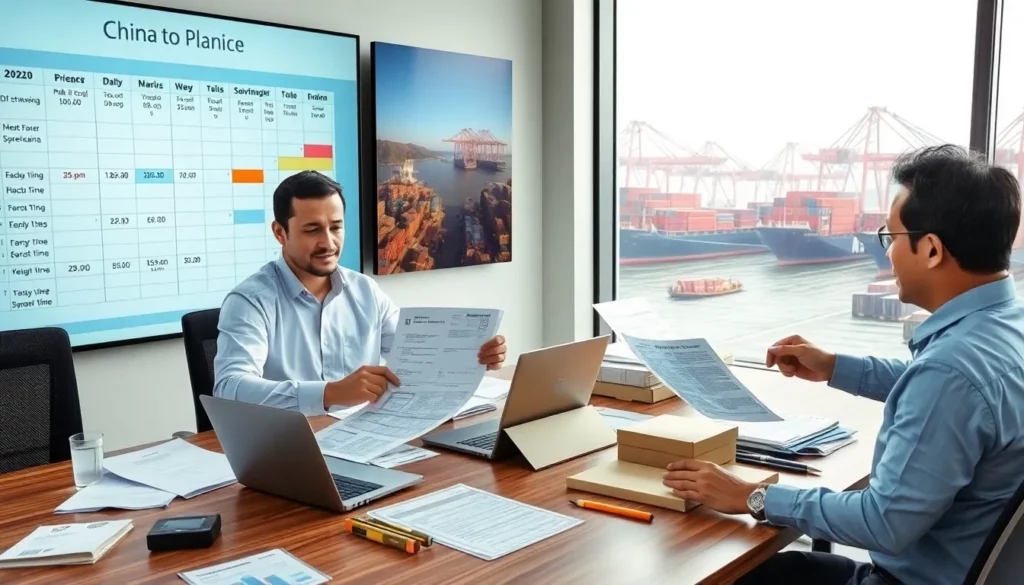
Step-by-Step Guide to Shipping from China to Mexico
Stage 1: Pre-Shipment Planning
Finalize Your Order
Align production and shipping schedules to avoid delays.
- Confirm Dates: Ensure supplier ex-factory dates match vessel schedules.
- Document Terms: Specify packaging and quality requirements.
- Buffer Time: Allow 3-5 days for production or export delays.
Tips: Coordinate with suppliers to avoid storage costs from early completion.
Define Incoterms
Incoterms clarify responsibilities and costs.
| Incoterm | Your Responsibility | Supplier Responsibility |
|---|---|---|
| FOB | Freight, insurance, destination charges | Delivery to port |
| EXW | Entire logistics chain | Factory handover |
| DDP | Minimal; customs clearance | All costs to destination |
| CIF | Import clearance, local delivery | Freight and insurance to port |
Best Practices: Choose FOB for control or DDP for simplicity, depending on your expertise.
Gather Product Specifications
Accurate specs ensure cost-effective shipping.
- Measurements: Weight and dimensions for freight calculations.
- Packaging: Details for safe loading and handling.
- HS Codes: For duty and regulatory compliance.
Important Warnings: Incorrect specs can lead to cost overruns or customs issues.
Verify Supplier Export License
Ensure your supplier is authorized to export.
- Verification: Check Chinese customs databases for license validity.
- Restrictions: Confirm product-specific export controls.
Tips: Request license numbers on invoices to streamline clearance.
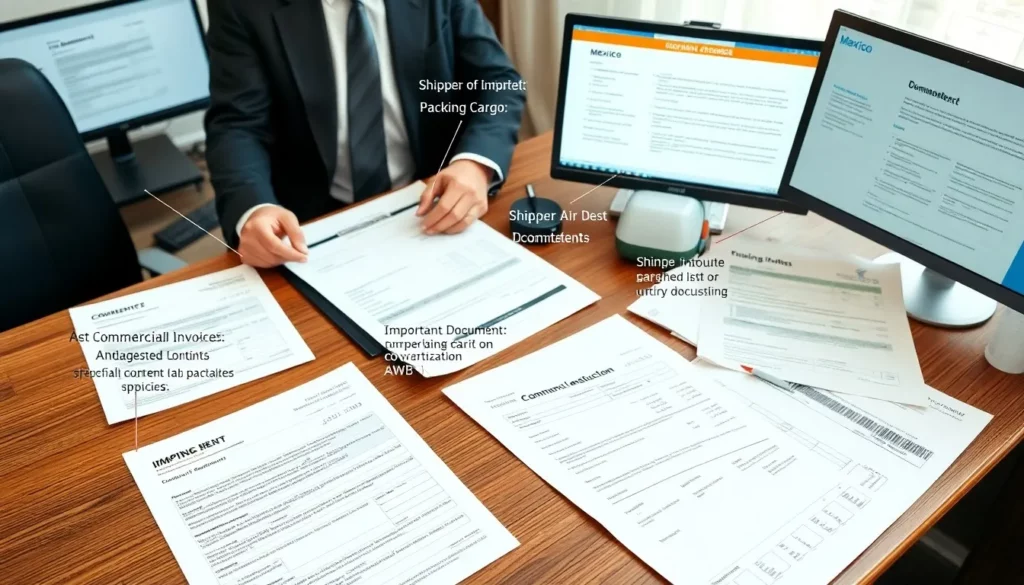
Stage 2: Documentation and Compliance
Prepare Core Documents
Accurate paperwork is essential for customs.
- Commercial Invoice: Product details, values, and HS codes.
- Packing List: Cargo contents and packaging specifics.
- Shipper’s Letter of Instruction: Handling and service instructions.
Important Warnings: Inconsistent documents trigger customs inquiries.
Secure B/L or AWB
These documents enable cargo release.
- B/L: Proves ownership for sea freight; telex release speeds clearance.
- AWB: Non-negotiable for air cargo release.
- Timing: Coordinate for payment or credit terms.
Tips: Verify consignee details to avoid costly amendments.
Obtain Mexico-Specific Documents
Compliance documents reduce duty and delays.
- Certificate of Origin: For trade agreement benefits.
- NOM Certification: For regulated products like electronics.
- Permits: For restricted goods like chemicals.
Best Practices: Work with a broker to ensure regulatory compliance.
Register as an Importer
Legal import requires Padrón de Importadores registration.
- Process: Submit RFC and broker details via SAT.
- Sector Registries: Extra compliance for sensitive industries.
- Maintenance: Update annually to stay active.
Important Warnings: Inactive registration halts imports.
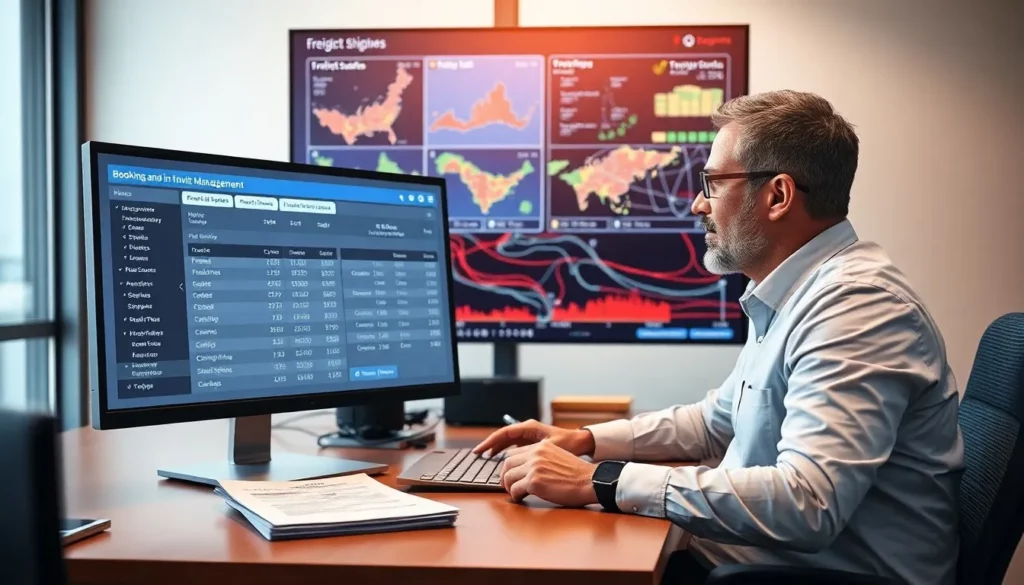
Stage 3: Booking and In-Transit Management
Request Freight Quotes
Compare multiple quotes for cost and service.
- What to Compare: Total costs, transit times, and tracking capabilities.
- Validity: Quotes last 7-15 days due to rate volatility.
Tips: Act quickly to secure quoted rates and space.
Book and Confirm Route
Lock in your shipment details early.
- Confirmation: Vessel/flight schedules and tracking numbers.
- Route Optimization: Balance speed, cost, and reliability.
- Verification: Check for potential delays or congestion.
Best Practices: Confirm space allocation to avoid bumping.
Arrange Cargo Insurance
Protect your shipment with adequate coverage.
- Coverage: All-risk for comprehensive protection.
- Value: Include CIF and profit margins.
- Claims: Understand notification and settlement procedures.
Tips: Verify policy terms to ensure full coverage.
Monitor Shipment Progress
Stay informed with real-time tracking.
- Systems: Carrier-integrated tracking for all modes.
- Customs Updates: Monitor clearance status.
- Delivery Coordination: Schedule appointments to avoid detention.
Best Practices: Use automated notifications for proactive management.
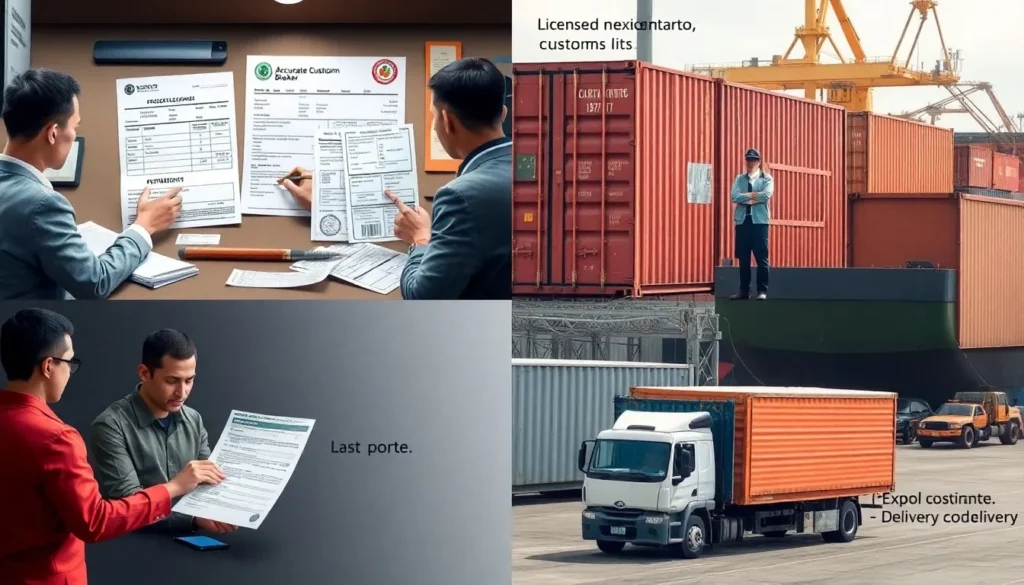
Stage 4: Customs Clearance and Delivery
China Export Clearance
Complete export formalities efficiently.
- Declaration: Submit accurate invoices and packing lists.
- Processing: 1-2 days for standard cargo.
- License Check: Ensure compliance with export controls.
Tips: Use expedited clearance for urgent shipments.
Engage a Mexican Customs Broker
A licensed broker ensures smooth clearance.
- Selection: Choose based on product expertise.
- Pedimento: Accurate duty and valuation preparation.
- Payments: Timely duty and tax submissions.
Best Practices: Authorize your broker early to avoid delays.
Manage Customs Inspections
Prepare for potential examinations.
- Document Review: Verify accuracy to minimize inquiries.
- Physical Inspection: Ensure cargo accessibility.
- Response: Address customs queries promptly.
Tips: Professional brokers expedite inspection processes.
Coordinate Final Delivery
Plan last-mile logistics carefully.
- Release Notification: Triggers pickup from port/airport.
- Carta Porte: Required for Mexican trucking compliance.
- Delivery Confirmation: Verify cargo condition upon receipt.
Best Practices: Schedule delivery appointments to avoid detention fees.
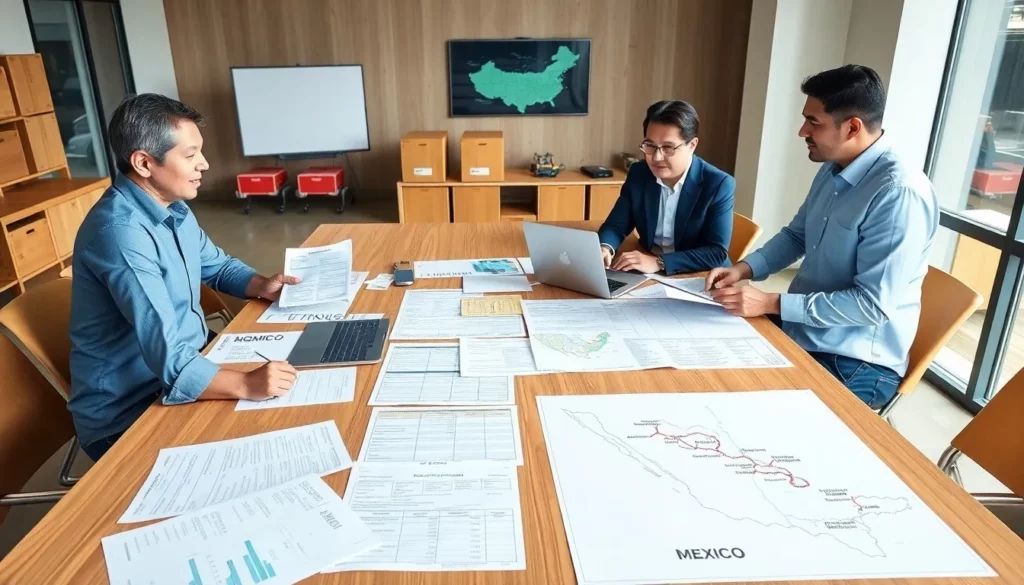
Conclusion
Plan shipments proactively by budgeting all costs, verifying documents, and aligning schedules to avoid delays. Choose a forwarder with China-Mexico expertise, reliable tech, and a strong track record. Focus on true landed cost—include duties and insurance, use trade agreements, and manage risks.
Frequently Asked Questions (FAQs)
1. What causes most customs delays, and how can I avoid them?
Incorrect documentation, especially invoices and certificates of origin, causes 70% of delays. Use a customs broker to ensure accuracy and compliance.
2. How do DDP Incoterms affect my costs?
DDP shifts all costs to the supplier, increasing product costs by 15-25% but simplifying your logistics. FOB offers more control for experienced importers.
3. What’s the minimum chargeable weight for freight?
Air freight starts at 1kg, with rate breaks at 100kg+; LCL starts at 1 CBM ($150-$200). Air is better for <100kg, sea for >500kg.
4. Are there restricted products for import into Mexico?
Electronics, appliances, and chemicals require NOM certification or permits. Verify requirements to avoid seizures.
5. How far in advance should I book during peak seasons?
Book ocean freight 4-6 weeks and air freight 2-3 weeks ahead to secure space and avoid surcharges.

